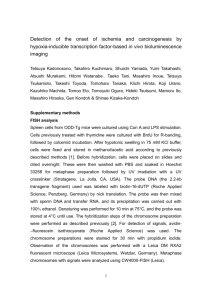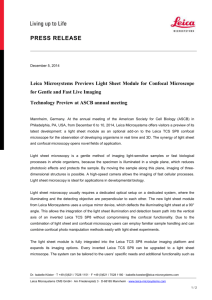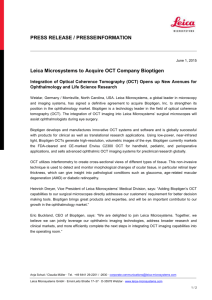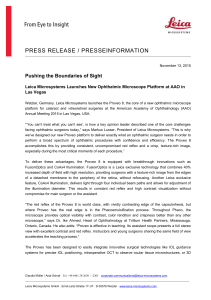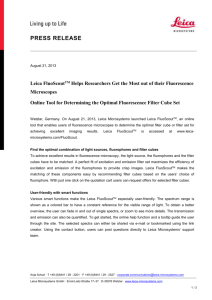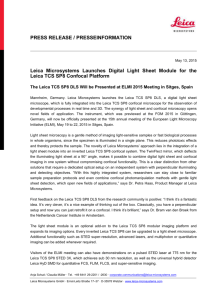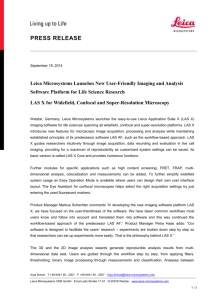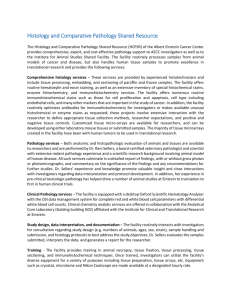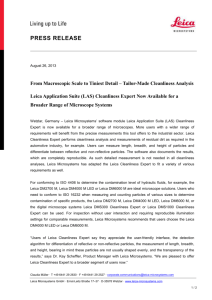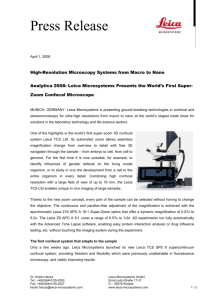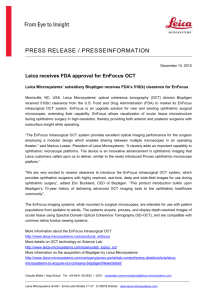141119_HyD_SMD_EN - Leica Microsystems
advertisement
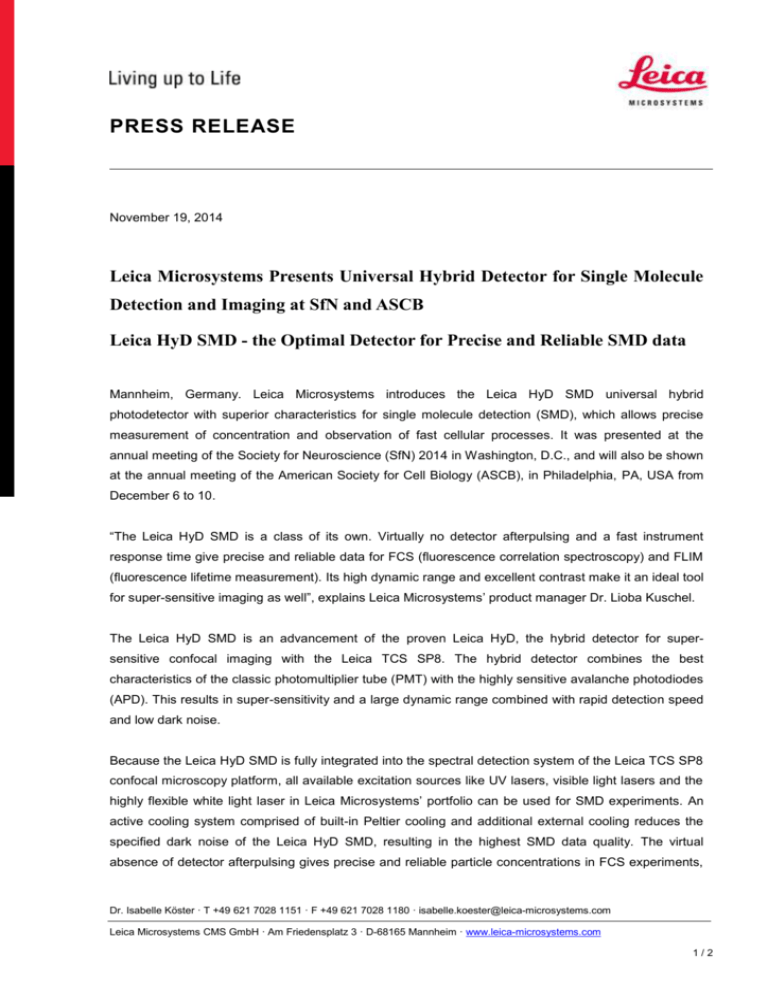
PRESS RELEASE November 19, 2014 Leica Microsystems Presents Universal Hybrid Detector for Single Molecule Detection and Imaging at SfN and ASCB Leica HyD SMD - the Optimal Detector for Precise and Reliable SMD data Mannheim, Germany. Leica Microsystems introduces the Leica HyD SMD universal hybrid photodetector with superior characteristics for single molecule detection (SMD), which allows precise measurement of concentration and observation of fast cellular processes. It was presented at the annual meeting of the Society for Neuroscience (SfN) 2014 in Washington, D.C., and will also be shown at the annual meeting of the American Society for Cell Biology (ASCB), in Philadelphia, PA, USA from December 6 to 10. “The Leica HyD SMD is a class of its own. Virtually no detector afterpulsing and a fast instrument response time give precise and reliable data for FCS (fluorescence correlation spectroscopy) and FLIM (fluorescence lifetime measurement). Its high dynamic range and excellent contrast make it an ideal tool for super-sensitive imaging as well”, explains Leica Microsystems’ product manager Dr. Lioba Kuschel. The Leica HyD SMD is an advancement of the proven Leica HyD, the hybrid detector for supersensitive confocal imaging with the Leica TCS SP8. The hybrid detector combines the best characteristics of the classic photomultiplier tube (PMT) with the highly sensitive avalanche photodiodes (APD). This results in super-sensitivity and a large dynamic range combined with rapid detection speed and low dark noise. Because the Leica HyD SMD is fully integrated into the spectral detection system of the Leica TCS SP8 confocal microscopy platform, all available excitation sources like UV lasers, visible light lasers and the highly flexible white light laser in Leica Microsystems’ portfolio can be used for SMD experiments. An active cooling system comprised of built-in Peltier cooling and additional external cooling reduces the specified dark noise of the Leica HyD SMD, resulting in the highest SMD data quality. The virtual absence of detector afterpulsing gives precise and reliable particle concentrations in FCS experiments, Dr. Isabelle Köster · T +49 621 7028 1151 · F +49 621 7028 1180 · isabelle.koester@leica-microsystems.com Leica Microsystems CMS GmbH · Am Friedensplatz 3 · D-68165 Mannheim · www.leica-microsystems.com 1/2 PRESS RELEASE while short living dyes can be used to observe fast live cell processes due to the fast instrument response time of the detector. At the ASCB, Leica Microsystems will also present the most recent addition to Leica Microsystems’ super-resolution microscope Leica TCS SP8 STED 3X: a pulsed 775 nm STED laser, which achieves sub 30 nm resolution through pulsed stimulated emission depletion technology. Leica HyD SMD – the universal detector for SMD and imaging. _______________ Leica Microsystems is a world leader in microscopes and scientific instruments. Founded as a family business in the nineteenth century, the company’s history was marked by unparalleled innovation on its way to becoming a global enterprise. Its historically close cooperation with the scientific community is the key to Leica Microsystems’ tradition of innovation, which draws on users’ ideas and creates solutions tailored to their requirements. At the global level, Leica Microsystems is organized in three divisions, all of which are among the leaders in their respective fields: the Life Science Division, Industry Division and Medical Division. The company is represented in over 100 countries with 6 manufacturing facilities in 5 countries, sales and service organizations in 20 countries, and an international network of dealers. The company is headquartered in Wetzlar, Germany. 2/2
